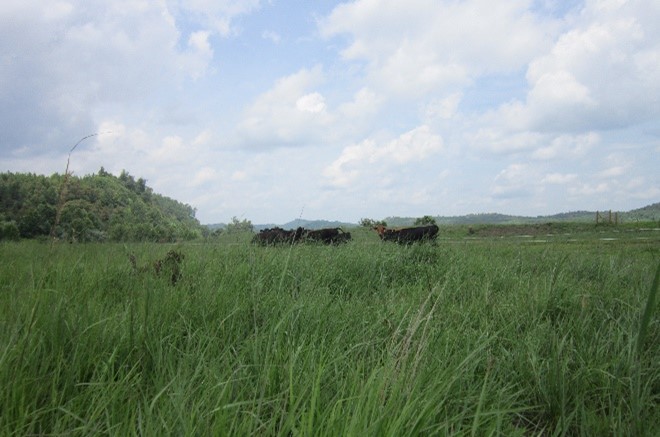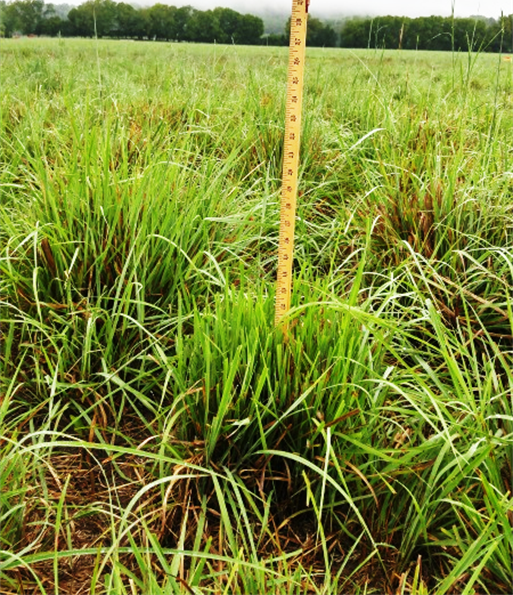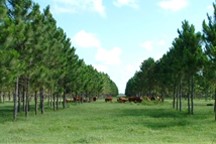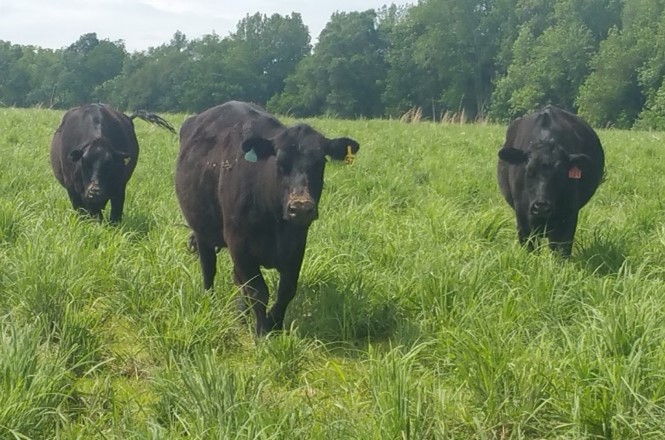
Perennial Native Grass
Perennial native grasses complement existing cool-season forages. Native grasses are highly productive in the summer, improve resiliency to drought and can be flood tolerant. They also require few fertilizer inputs, are very tolerant of acidic soils, and, due to their large and deeper root systems, improve soil quality. Incorporating these grasses can support increased livestock weight gain and revenue, reduce hay feeding and associated costs, and provide needed rest for cool-season pastures. Native plants also contribute to improved habitat for at-risk grassland birds and pollinators. Establishment of perennial native grass forage and using prescribed fire as a management method are included in this practice.
Overview of installation and maintenance Guidelines for Perennial Native Grasses Practice

Improved Grazing Management
The goal of the “improved grazing management” practice is to maintain optimal leaf surface area for longer periods and allow adequate rest so that grass vigor and productivity is increased. Consequently, root volume, soil carbon storage, and soil quality will also improve. The larger roots and greater soil organic matter, coupled with increased water infiltration, will improve drought resiliency. Reductions in inputs associated with improved grazing (e.g., less fertilizer applied through improved manure distribution and incorporation, reduced hay feeding) will also reduce the GHG footprint of grassland agriculture and reduce costs. Finally, healthier grass stands will also reduce requirements for pasture renovation and/or re-establishment.

Legumes as an alternative N Source
Legumes, interseeded with existing grass in a fescue-dominated pasture, can replace GHG-intensive inorganic N sources such as urea. Maintaining productivity of pastures by use of an appropriate N source is important for profitability and environmental outcomes (by reducing wasteful losses to the environment). Improved N management also increases root growth, which contributes to greater C storage and soil health. Because legumes can improve efficiency of N, they can be very cost effective.

Silvopasture
Silvopasture is a practice that mimics long-term historical ecological conditions of the region. It can increase C storage – in roots and soil but also within the aboveground tree itself. Silvopasture also has the potential to provide an alternative revenue source (i.e., wood products, tree crops, fodder) to diversify farm resources and income. Scattered trees within a pasture can also provide shade and reduce stress, contributing to animal welfare, particularly under conditions of extreme heat.
Overview of Silvopasture Installation and Management Guidelines

Perennial Grassland Buffers
Planted along the edges of row crop fields, perennial grassland buffers will increase carbon storage within the buffers, reduce off-site movement of soil, nutrients, and chemicals, and provide habitat for at-risk grassland birds and pollinators. Buffers will be planted to a high-diversity, native plant mix that includes forbs, legumes, and grasses to ensure the greatest possible benefit. Where available, precision farming data can be used to place buffers where field productivity – and profits – are already low, thus making a positive contribution to overall farm revenue.
Overview of Perennial Grassland Buffer Installation and Maintenance Guidelines

Novel Soil Amendments
Two novel soil amendments, biochar and gypsum, have been shown to slow N transformations/release in the soil and can improve soil C balances. Biochar is biomass decomposed at high temperatures in the absence of oxygen making it a stable, carbon-rich material. Gypsum, calcium sulfate derived from by-products or recycled products, acts as a soil conditioner that improves tilth and supplies calcium and sulfur for plant nutrition.
